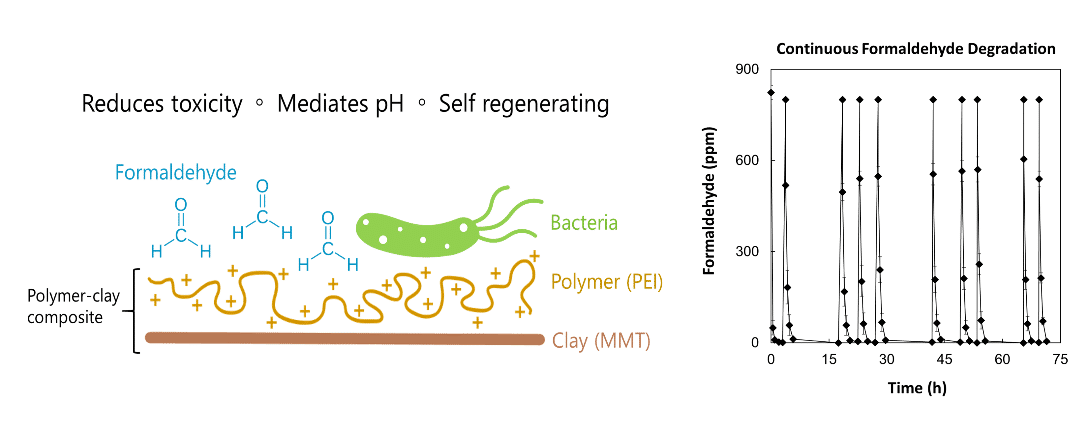
Self-regenerating bio-clays for formaldehyde wastewater remediation
2Faculty of Biotechnology and Food Engineering, Technion – Israel Institute of Technology, Haifa, Israel
A multi-functional, self-regenerating clay-based material was designed to adsorb and biodegrade formaldehyde from industrial wastewater in a simple, one-step process. The material is based on montmorillonite, polyethyleneimine and formaldehyde-degrading Pseudomonas putida and has three functions which facilitate bioremediation: a. Selectively adsorbs formaldehyde to reduce cytotoxicity, b. buffers the solution to allow efficient biodegradation, and c. self-cleans through slow release of formaldehyde and subsequent degradation by the attached bacteria.
A polyethyleneimine-montmorillonite composite was optimized to carry a positive surface charge and a high concentration of functional amine groups, which facilitated formaldehyde adsorption and bacterial adhesion. Formaldehyde was specifically bound to the amines on the composite through the well-known Schiff base reaction. The binding was reversible and pH dependent and fit the Langmuir model with a qmax of 62 mg∙g-1 composite. The formaldehyde degrading Pseudomonas putida strain was then immobilized on the positively charged composite and the bio-clay was characterized and optimized using X-ray diffraction, zeta potential measurements, BET, confocal and electron microscopy.
The efficiency of the resulting bio-composite was demonstrated for multiple successive treatment cycles, with degradation rates as high as 1600 ppm FA∙h-1. This self-regenerating one-step process is a very promising solution to the challenging drawbacks of formaldehyde remediation but can also help design other clay-based adsorption-degradation platforms for wastewaters that demand complicated treatment strategies.
Powered by Eventact EMS